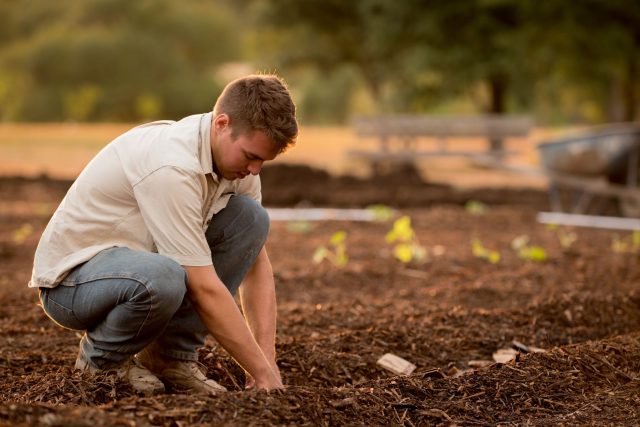Gardening is a wonderful hobby that offers beauty and relaxation to those participating. Whether you are an avid gardener or just starting out, maintaining your garden can be both enjoyable and rewarding. Keeping your garden looking great can be easier than you think with the right tips and tricks. In this article, we’ll discuss the basics of garden maintenance so you can learn how to take care of your beloved plants.
Garden Maintenance
Maintaining a garden can be a rewarding and enjoyable activity, but it also requires consistent effort and attention to keep it looking its best. Garden maintenance can include watering plants, pruning trees and shrubs, weeding, fertilizing, and mowing the lawn. Regular maintenance can help prevent pest and disease problems and also encourage healthy growth in your plants. It’s important to schedule regular check-ups on your garden to ensure everything grows as it should and to catch any problems early on. By taking care of your garden regularly, you can ensure that it remains a beautiful and enjoyable outdoor space for years to come.
Watering Essentials
Watering is one of the essential tasks in maintaining a healthy garden, and it’s important to do it properly in order to promote healthy growth in your plants. Here are some watering essentials to keep in mind:
- Timing: Water your garden in the morning or evening when it’s cooler outside to soak into the soil instead of evaporating in the day’s heat.
- Frequency: How often you need to water your garden depends on various factors, including the type of plants, the climate you live in, and the time of year. Most plants need about an inch of water per week, but this can vary depending on the plant and soil conditions.
- Amount: When you water your garden, give it a good soak. This helps to encourage deep root growth and helps your plants to develop stronger roots. Aim to water your garden deeply and infrequently rather than giving it a light watering every day.
- Method: There are various ways to water your garden, including using a watering can, a garden hose, or a sprinkler. The method you choose will depend on the size of your garden and the types of plants you have. Check out our article on garden irrigation!
- Consistency: Consistency is key when it comes to watering your garden. Try to water your garden regularly so that your plants can develop a consistent watering routine, and adjust your watering schedule as needed depending on the weather and other factors. By keeping these watering essentials in mind, you can help your garden thrive and ensure your plants remain healthy and strong.
Fertilizing Basics
Fertilizing is an important aspect of garden maintenance, as it provides essential nutrients that help your plants to grow strong and healthy. Here are some fertilizing basics to keep in mind:
- Types of Fertilizer: There are many different types of fertilizer, including organic and synthetic options. Organic fertilizers are made from natural materials and are often slower to release nutrients into the soil, while synthetic fertilizers are made from chemical compounds and provide a quick release of nutrients.
- Nutrient Balance: Different types of plants require different types and amounts of nutrients, so it’s important to choose a fertilizer that is balanced for your specific plants. A balanced fertilizer typically includes nitrogen, phosphorus, and potassium, which are all important for plant growth.
- Timing: When to fertilize depends on the type of plants and the fertilizer being used. Generally, it’s best to fertilize early in the growing season, as this will provide the nutrients your plants need to develop strong roots and foliage. It’s important to follow the manufacturer’s instructions for how often to fertilize and at what intervals.
- Application: There are various ways to apply fertilizer, including adding it to the soil, using a foliar spray, or incorporating it into irrigation systems. Be sure to follow the instructions on the package, as over-fertilizing can harm your plants.
- Soil Testing: It’s a good idea to test your soil to determine its nutrient levels and pH, as this can help you choose the right fertilizer for your plants. You can purchase soil testing kits at many garden centers or have your soil tested by a professional.
By keeping these fertilizing basics in mind, you can ensure that your plants receive the nutrients they need to grow healthy and strong, and you can enjoy a beautiful and productive garden.
Pruning Techniques
Pruning is an important technique in maintaining the health and appearance of your garden plants. Here are some pruning techniques to keep in mind:
- Timing: The best time to prune depends on the type of plant you’re working with. Generally, it’s best to prune when the plant is dormant, typically in the winter or early spring. However, some plants may need to be pruned during the growing season to promote healthy growth.
- Tools: The right tools are essential for successful pruning. Pruning shears or loppers are useful for cutting smaller branches, while a pruning saw or chainsaw may be needed for larger branches.
- Cutting Technique: When pruning, it’s important to make clean cuts that are close to the main stem or trunk. Avoid cutting too close to the trunk, which can damage the plant. Ensure your tools are sharp to avoid damaging the plant or leaving rough, uneven cuts.
- Removing Dead or Damaged Wood: One of the main purposes of pruning is to remove dead or damaged wood from a plant. This helps to promote healthy growth and can prevent the disease from spreading.
- Shaping: Pruning can also be used to shape a plant or tree. This can help to create a desired look and encourage healthy growth.
- Considerations: When pruning, it’s important to consider the growth habit of the plant and the desired outcome. For example, some plants may need to be pruned more heavily to maintain their shape, while others may only require light trimming.
By mastering these pruning techniques, you can help your garden plants to grow healthy and strong, and create a beautiful and well-maintained outdoor space. If you are looking for more information check out our complete guide on garden pests!
Weed Control Strategies
Weeds can quickly take over a garden if left unchecked, so it’s important to have effective strategies for controlling them. Here are some weed control strategies to keep in mind:
- Manual Control: One of the most effective ways to control weeds is by pulling them out manually. This can be time-consuming, but it’s an effective way to remove weeds without the use of chemicals.
- Mulching: Applying a layer of mulch around plants can help to prevent weeds from growing. The mulch helps to suppress weed growth by preventing light from reaching the soil and by keeping the soil moist.
- Herbicides: There are a variety of herbicides available that can be used to control weeds. Some herbicides are selective, meaning they only target specific types of weeds, while others are non-selective and will kill any plants they come into contact with. It’s important to follow the manufacturer’s instructions when using herbicides, as they can be harmful to the environment and to other plants if not used properly.
- Cover Crops: Planting cover crops can help to prevent weeds from growing. Cover crops are plants that are grown specifically to protect the soil and provide nutrients. They can help to shade out weed seeds and prevent them from germinating.
- Preventative Measures: The best way to control weeds is to prevent them from growing in the first place. This can be done using weed barriers, such as landscape fabric, and ensuring the soil is well-maintained and healthy.
Using these weed control strategies, you can keep your garden looking beautiful and healthy while minimizing the time and effort required for maintenance.
Pest Management Solutions
Pest management is essential to garden maintenance, as pests can quickly damage or destroy plants. Here are some pest management solutions to keep in mind:
- Identify the Pest: The first step in pest management is identifying the pest causing damage to your plants. This can help you to determine the best solution for controlling the pest.
- Natural Solutions: There are a variety of natural solutions for controlling pests, such as using companion planting, which involves planting certain plants that repel pests, or using natural predators, such as ladybugs, to eat pest insects.
- Chemical Solutions: Chemical solutions, such as insecticides and fungicides, can effectively control pests, but they should be used sparingly and with caution. It’s important to read the manufacturer’s instructions carefully and follow them closely to ensure the product is used safely and effectively.
- Cultural Practices: Good cultural practices, such as proper watering and fertilizing, can help to keep plants healthy and more resistant to pest damage. Proper pruning and removal of infected plants can also help prevent pests’ spread.
- Integrated Pest Management: Integrated Pest Management (IPM) is a holistic approach to pest management that combines natural solutions, cultural practices, and chemical solutions to control pests safely and effectively. IPM involves monitoring pests and using the most effective solution for controlling them based on the severity of the infestation.
Using these pest management solutions, you can help protect your garden from pest damage and maintain healthy and productive plants. It’s important to use a combination of methods to control pests safely and effectively.
Conclusion: Enjoy Your Garden!

In conclusion, maintaining a garden requires effort and attention, but the rewards are well worth it. Whether you are a seasoned gardener or just starting out, following the essential maintenance tasks such as watering, fertilizing, pruning, weed control, and pest management can help you to create a beautiful and healthy outdoor space. Remember to enjoy the process and take pleasure in your garden’s beauty and abundance. With a little bit of care and attention, you can watch your garden flourish and provide you with endless joy and satisfaction. So get out there, get your hands dirty, and enjoy your garden!






























